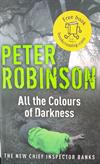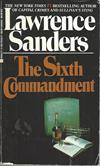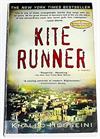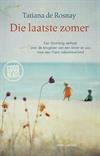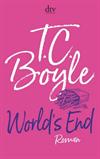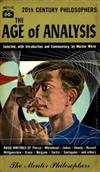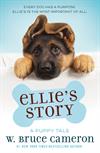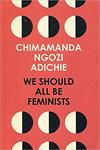
Walking on Glass
Registered by cluricaune of Armagh, Co. Armagh United Kingdom on 2/15/2014
 This Book is Currently in the Wild!
This Book is Currently in the Wild!
 This Book is Currently in the Wild!
This Book is Currently in the Wild!
1 journaler for this copy...
Iain Banks first novel, The Wasp Factory, was published in 1984. In the years since, he's won critical acclaim, topped best-seller lists and has even written Science Fiction books under the cunning nom-de-plume 'Iain M. Banks'. He's also seen this book, "The Crow Road", adapted for television by the BBC in 1996. "Walking on Glass" is his second book and was first published in 1985.
The book is made up of three sub-stories and – though it might be difficult to believe – they all come together at the end of the book. Graham Park is the first character we meet – he’s in the second year of his course at Art School in London. He moved up to the city from the country, and initially found the transition a little difficult. He’d taken no chances in ‘protecting’ himself – he’d always been a little guarded, a little cool…a little bit too careful all round. Now, however, he’s about to take a bit of a risk. On a Tuesday afternoon in late June, he leaves school with a collection of drawings under his arm. They all share the same subject : Sara Ffitch. Graham had been introduced to Sara by Richard Slater – the one real friend he’s apparently made since he arrived in the city - and has been besotted with her since the moment they met. Sara has split from her husband, and has a biker boyfriend called Stock. However, having spoken to her on the phone that morning, Graham thinks that Stock is about to be shown the road – and that he’s about in line to fill the position. As he walks from the school to her apartment, he looks back over how things have progressed between them...
Steven Grout, on the other hand, isn’t having such a good day. He makes his first appearance losing his job with Islington Council. He had been working with the Highways Department and (unsurprisingly) his behaviour has been causing a great deal of concern. Finally, having attacked both a cat and a co-worker close to the Canal, his boss is making it quite clear if he steps out of line once more, he’ll be sacked. Steven snaps, and – believing it to be some sort of victory over ‘Them’ - quits. Unfortunately, finding himself out of work isn’t Steven’s only problem. He only walks on the cracks in the pavements, wears a hard hat at all times (to protect his head from accidents “they” – the Tormentors - have arranged) and believes he’s under attack from a microwave gun (a secret weapon “they” only use at the most inconvenient times). That’s not to mention the laser attacks from passing cars…although you can’t see them or feel the lasers, he knows the Tormentors were take points off him with every strike. He believes he is actually one of the mightiest warlords in history, having fought a key role in the final battle between Good and Evil. Unfortunately, something had gone badly and he’d been sent to Earth, as both a punishment and a test. He’s determined to win through, by finding both “the Key” and the Way Out...perhaps unsurprisingly, he expects to find a lot of his clues in his collection of sci-fi.
Quiss, meanwhile, is an old soldier who fought in the Therapeutic Wars – he has been imprisoned in a strange castle with Ayayi, a female who fought on the opposite side. Both have somehow managed to disgrace themselves, and the castle serves both as a punishment and provides a last chance of redemption. Working together to play a series of games they don’t know the rules to, they are given a chance to solve a riddle – if they provide the right answer they will be freed and allowed to carry on with their lives.
This is probably one of Banks less well-known books, and he has written better admittedly. I also wondered a little if he revisited some of the ideas he used here in later books – particularly with “A Song of Stone” and “The Bridge”. However, that doesn’t mean “Walking on Glass” should be avoided. It’s an easy enough read overall - it’s a bit of fun watching what happens, and trying to figure out how the characters are connected.
The book is made up of three sub-stories and – though it might be difficult to believe – they all come together at the end of the book. Graham Park is the first character we meet – he’s in the second year of his course at Art School in London. He moved up to the city from the country, and initially found the transition a little difficult. He’d taken no chances in ‘protecting’ himself – he’d always been a little guarded, a little cool…a little bit too careful all round. Now, however, he’s about to take a bit of a risk. On a Tuesday afternoon in late June, he leaves school with a collection of drawings under his arm. They all share the same subject : Sara Ffitch. Graham had been introduced to Sara by Richard Slater – the one real friend he’s apparently made since he arrived in the city - and has been besotted with her since the moment they met. Sara has split from her husband, and has a biker boyfriend called Stock. However, having spoken to her on the phone that morning, Graham thinks that Stock is about to be shown the road – and that he’s about in line to fill the position. As he walks from the school to her apartment, he looks back over how things have progressed between them...
Steven Grout, on the other hand, isn’t having such a good day. He makes his first appearance losing his job with Islington Council. He had been working with the Highways Department and (unsurprisingly) his behaviour has been causing a great deal of concern. Finally, having attacked both a cat and a co-worker close to the Canal, his boss is making it quite clear if he steps out of line once more, he’ll be sacked. Steven snaps, and – believing it to be some sort of victory over ‘Them’ - quits. Unfortunately, finding himself out of work isn’t Steven’s only problem. He only walks on the cracks in the pavements, wears a hard hat at all times (to protect his head from accidents “they” – the Tormentors - have arranged) and believes he’s under attack from a microwave gun (a secret weapon “they” only use at the most inconvenient times). That’s not to mention the laser attacks from passing cars…although you can’t see them or feel the lasers, he knows the Tormentors were take points off him with every strike. He believes he is actually one of the mightiest warlords in history, having fought a key role in the final battle between Good and Evil. Unfortunately, something had gone badly and he’d been sent to Earth, as both a punishment and a test. He’s determined to win through, by finding both “the Key” and the Way Out...perhaps unsurprisingly, he expects to find a lot of his clues in his collection of sci-fi.
Quiss, meanwhile, is an old soldier who fought in the Therapeutic Wars – he has been imprisoned in a strange castle with Ayayi, a female who fought on the opposite side. Both have somehow managed to disgrace themselves, and the castle serves both as a punishment and provides a last chance of redemption. Working together to play a series of games they don’t know the rules to, they are given a chance to solve a riddle – if they provide the right answer they will be freed and allowed to carry on with their lives.
This is probably one of Banks less well-known books, and he has written better admittedly. I also wondered a little if he revisited some of the ideas he used here in later books – particularly with “A Song of Stone” and “The Bridge”. However, that doesn’t mean “Walking on Glass” should be avoided. It’s an easy enough read overall - it’s a bit of fun watching what happens, and trying to figure out how the characters are connected.
To the finder:
Welcome to BookCrossing!
Please make a journal entry to let me know that this book has been caught so I know that it has found a good home with you. I hope you like the book, but I'd be grateful if you'd let me know what you thought of it by making another journal entry when you've finished it.
Then, whenever you are ready to send it on its way, make a journal entry if you are giving or sending this book to a known person, or a release note if you are leaving it “in the wild” again for anyone to catch. Then watch its journey.
If you've decided to sign up, you’ll be alerted by e-mail each time someone makes another journal entry. And it’s confidential (you are known only by your screen name and no one is ever given your e-mail address), free, and spamless !
Some faqs : http://www.bookcrossing.com/faqs
Welcome to BookCrossing!
Please make a journal entry to let me know that this book has been caught so I know that it has found a good home with you. I hope you like the book, but I'd be grateful if you'd let me know what you thought of it by making another journal entry when you've finished it.
Then, whenever you are ready to send it on its way, make a journal entry if you are giving or sending this book to a known person, or a release note if you are leaving it “in the wild” again for anyone to catch. Then watch its journey.
If you've decided to sign up, you’ll be alerted by e-mail each time someone makes another journal entry. And it’s confidential (you are known only by your screen name and no one is ever given your e-mail address), free, and spamless !
Some faqs : http://www.bookcrossing.com/faqs
Journal Entry 3 by cluricaune at Starbucks, 90 Botanic Avenue in Belfast, Co. Antrim United Kingdom on Thursday, May 29, 2014
Released 9 yrs ago (5/29/2014 UTC) at Starbucks, 90 Botanic Avenue in Belfast, Co. Antrim United Kingdom
WILD RELEASE NOTES:
On the bench upstairs that has the coffee sticks and sugar.
